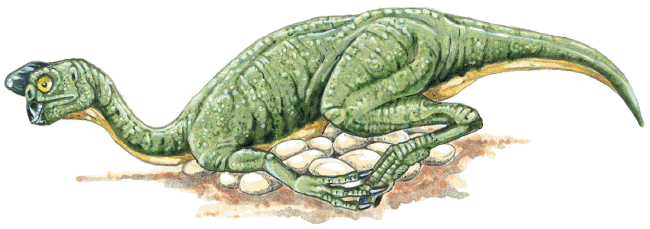|
Feather Length |
|
Most authorities now agree
that some of the small, swift bipedal dinosaurs were warm-blooded and
that they developed feathers as a means of providing insulation,
but they have long wondered why feathers became so large. |
|
 |
|
Nomingia gobiensis,
shown without feathers |
|
Oviraptor philoceratops is
known to have protected its eggs, but it clutches were large and could
not be fully protected. |
|
 |
|
Nomingia gobiensis,
shown with feathers |
|
Thomas P. Hop and Mark J. Orsen of Protein Research Laboratories Inc
of Seattle, Washington have theorized that dinosaurs that mutated to
produce large feathers were better able to protect their eggs from
heat and cold. This is well demonstrated by the above illustrations
showing the difference in the amount of protection provided by a
parent with no feathers and one with lots of them. This led to
feather dinosaurs having a higher survival rate and far more
descendents - a classic case of "survival of the fittest."
Flight may have been a byproduct of this new characteristic |
|
|
|
|
| |
|
|
|
|
|
|
|
|
Edugraphics.Net | Feenixx Publishing |
|
|
![]()